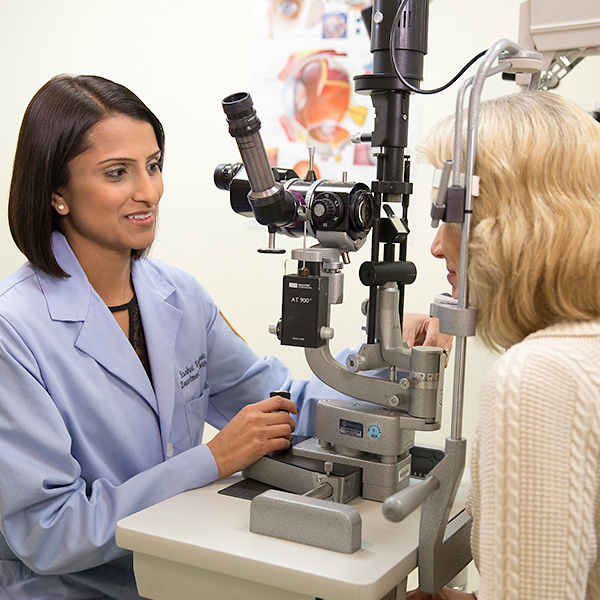Chronic Angle Closure Glaucoma
Overview and Facts about Chronic Angle Closure Glaucoma
Even though it can be prevented, glaucoma conditions are one of the leading causes of blindness in people over 60 years old. Chronic angle closure glaucoma develops slowly over time as the iris, or colored part of the eye, blocks the eye’s drainage angle.
Once it becomes fully blocked, the pressure in your eye increases, leading to a range of symptoms and, sometimes, permanent eye damage.
In some cases, no symptoms are noticed until a sudden blockage occurs, causing an attack. Approximately 30% of people with chronic angle closure glaucoma experience one of these attacks.
Signs and Symptoms of Chronic Angle Closure Glaucoma
Due to the slow onset of chronic angle closure glaucoma, you may not notice symptoms until they become severe. Common symptoms of the glaucoma condition include:
- Blurry vision
- Severe eye pain
- Headache
- Nausea
- Vomiting
- Colored rings or halos around lights
Causes and Risk Factors of Chronic Angle Closure Glaucoma
The underlying cause of chronic angle closure glaucoma is currently undetermined. Most likely, it can be caused by the following:
- Your iris becoming thicker than normal
- A plateau iris that blocks fluid due to a roll on its side
- An overly large lens that keeps fluid from moving through the eye
Certain people have a higher risk of developing chronic angle closure glaucoma than others. If you have a small eye or an unusually large lens, you may have a higher risk for this glaucoma condition. Other risk factors include those who are:
- Women
- Over 50
- Asian or Inuit
- Farsighted
- Related to someone with chronic angle closure glaucoma
Tests and Diagnosis of Chronic Angle Closure Glaucoma
If your doctor thinks you may have chronic angle closure glaucoma, a complete eye exam is necessary, not just the common glaucoma screening. A complete eye exam includes:
- Measuring eye pressure
- Looking at the drainage angle
- Examining the optic nerve
- Testing peripheral vision
Treatment and Care for Chronic Angle Closure Glaucoma
Once chronic angle closure glaucoma damages your eye, it cannot be reversed, but your doctor can prevent further damage with a combination of medication and surgery. They may prescribe daily eye drops to help keep eye pressure down.
There are several types of these eye drops available, including some that make the eye create less fluid and some that help the fluid drain more efficiently. Your doctor can determine which is best for you.
Most cases of chronic angle closure glaucoma require some level of surgery. In some cases, your doctor uses laser surgery to either create a tiny hole in the iris or to shift the iris away from the drainage angle. Both procedures allow the fluid to drain better from your eye.

